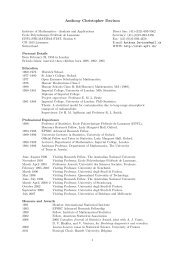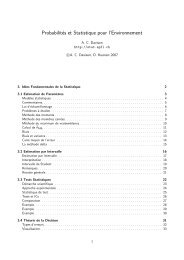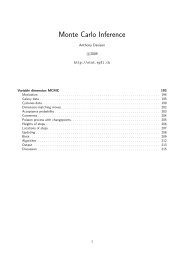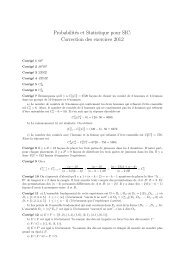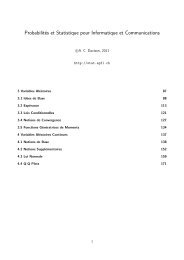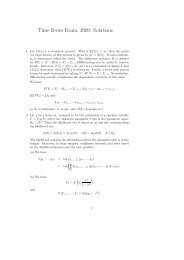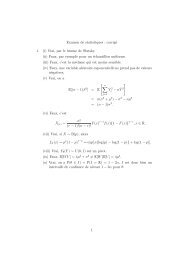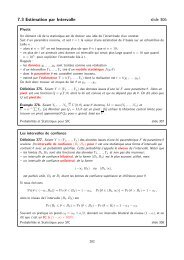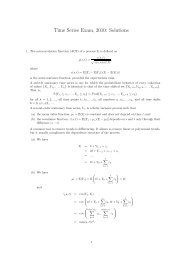Time Series - STAT - EPFL
Time Series - STAT - EPFL
Time Series - STAT - EPFL
Create successful ePaper yourself
Turn your PDF publications into a flip-book with our unique Google optimized e-Paper software.
Moving average process<br />
Definition 39 A moving average model of order q, MA(q), is of the form<br />
Y t = ε t + θ 1 ε t−1 + · · · + θ q ε t−q , (11)<br />
where θ 1 ,... ,θ q are constants, θ q ≠ 0, and ε t<br />
iid ∼ N(0,σ 2 ). A process with non-zero mean is obtained<br />
by replacing Y t in (11) by Y t − µ.<br />
The backshift operator B can be used to write (11) in the form<br />
Y t = (1 + θ 1 B + · · · + θ q B q )ε t = θ(B)ε t ,<br />
where θ(B) is the moving average operator. The process (11) is stationary for any values of the θ r .<br />
Example 40 Show that the MA(1) processes with parameters θ 1 and 1/θ 1 are statistically<br />
indistinguishable.<br />
<strong>Time</strong> <strong>Series</strong> Spring 2010 – slide 139<br />
Invertibility<br />
Definition 41 A moving average process {Y t } is called invertible if it has an infinite autoregressive<br />
representation<br />
∞∑<br />
ε t = a j Y t−j .<br />
□ This definition is needed simply in order to ensure the identifiability of MA processes.<br />
□ In Example 40 it is easy to check which version is invertible, we write<br />
ε t = (1 + θ 1 B) −1 Y t =<br />
which is convergent iff |θ 1 | < 1.<br />
j=0<br />
∞∑<br />
∞∑<br />
(−θ 1 B) j Y t = (−θ 1 ) j Y t−j ,<br />
j=0<br />
<strong>Time</strong> <strong>Series</strong> Spring 2010 – slide 140<br />
j=0<br />
132



